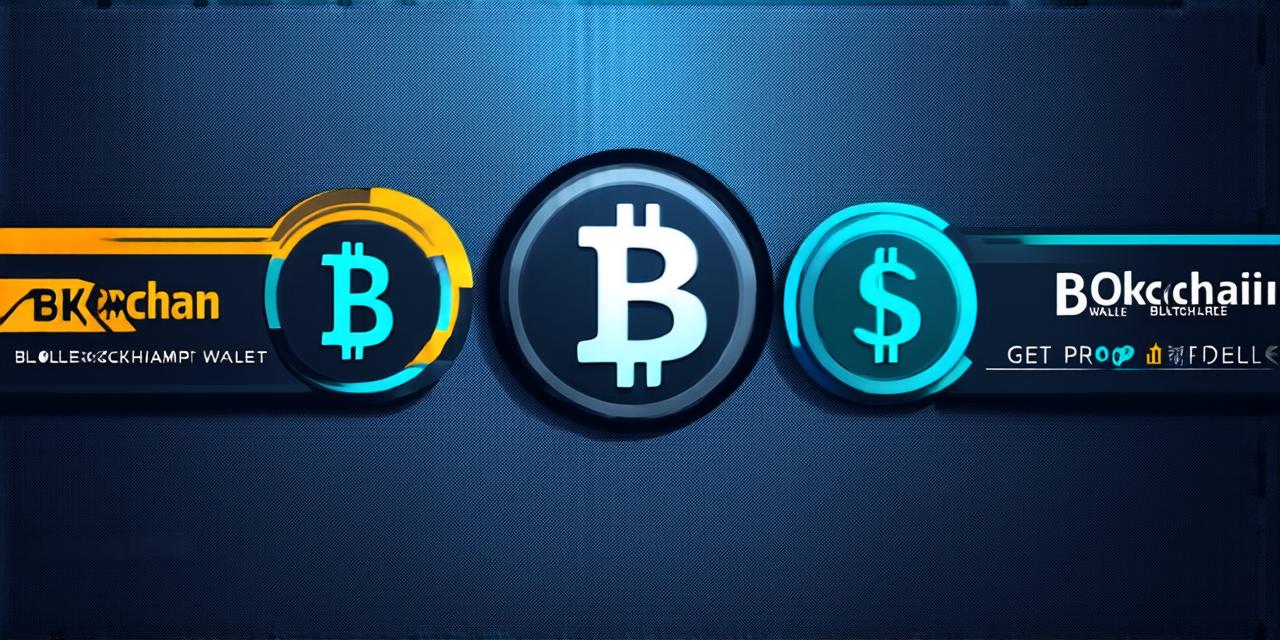The Importance of Blockchain Wallet IDs
A blockchain wallet ID is a unique identifier that allows you to access your digital assets stored on the blockchain network. This ID enables you to make transactions, store and manage your funds, and interact with other users of the network. Without a secure and user-friendly blockchain wallet ID, you risk losing access to your digital assets or falling victim to fraudulent activities.
Choosing the Right Blockchain Wallet Provider
The first step in creating a blockchain wallet ID is selecting a reliable and trustworthy wallet provider. Several factors can influence your decision when choosing a wallet provider, including security features, user-friendliness, transaction speed, and customer support. You should consider the reputation of the wallet provider, the type of cryptocurrencies it supports, and any additional features that may be available to you.
There are various blockchain wallet providers to choose from, each with its own set of features and benefits. Some of the popular options include Coinbase, Binance, MetaMask, and MyEtherWallet. It’s essential to research and compare different wallet providers before making a decision that aligns with your needs and preferences.
Securing Your Blockchain Wallet ID
Once you have selected a blockchain wallet provider, the next step is to secure your wallet ID. This involves setting up strong passwords, enabling two-factor authentication (2FA), and using other security measures such as hardware wallets or multi-signature addresses.
Creating a Strong Password
Creating a strong password is crucial for securing your blockchain wallet ID. Your password should be at least 12 characters long and contain a combination of uppercase and lowercase letters, numbers, and symbols. Avoid using easily guessable information such as birthdays or addresses, and don’t share your password with anyone.
Enabling Two-Factor Authentication (2FA)
Enabling two-factor authentication (2FA) is another important security measure that can help protect your wallet from unauthorized access. 2FA involves entering a verification code sent to your phone or email address before accessing your wallet. This adds an extra layer of security, making it more difficult for hackers to gain access to your funds.
Using Hardware Wallets or Multi-Signature Addresses
Using a hardware wallet or multi-signature addresses is another way to secure your blockchain wallet ID. Hardware wallets offer an additional layer of security by storing your private keys offline, while multi-signature addresses require multiple signatures to authorize transactions, making it more difficult for hackers to access your funds.
Managing Your Blockchain Wallet ID
Creating a blockchain wallet ID is just the beginning; managing it effectively is equally important. You should regularly monitor your wallet’s balance, transaction history, and any other relevant information to ensure its safety and security.

In addition to monitoring your wallet, you should also update your wallet’s security features as new threats emerge or as technology evolves. Keeping your wallet’s software up to date with the latest security patches and bug fixes is essential to prevent vulnerabilities from being exploited by attackers.
Best Practices for Blockchain Wallet ID Management
Here are some best practices for managing your blockchain wallet ID:
- Use a unique and secure password that contains a combination of uppercase and lowercase letters, numbers, and symbols. Avoid using easily guessable information such as birthdays or addresses.
- Enable two-factor authentication (2FA) to add an extra layer of security to your wallet. 2FA involves entering a verification code sent to your phone or email address before accessing your wallet.
- Use a hardware wallet or multi-signature addresses to store and manage your digital assets. Hardware wallets offer an additional layer of security by storing your private keys offline, while multi-signature addresses require multiple signatures to authorize transactions, making it more difficult for hackers to access your funds.
- Regularly backup your wallet’s data to ensure that you can recover it in case of a system failure or other unexpected events.
- Keep your wallet’s software up to date with the latest security patches and bug fixes to prevent vulnerabilities from being exploited by attackers.
Conclusion
Creating a secure and user-friendly blockchain wallet ID is essential for anyone interested in using cryptocurrency or other decentralized applications. By selecting a reliable wallet provider, securing your ID, and managing it effectively, you can stay safe and secure while using cryptocurrency. Remember to follow best practices for security and keep your wallet up to date with the latest software patches and bug fixes to prevent vulnerabilities from being exploited by attackers.
